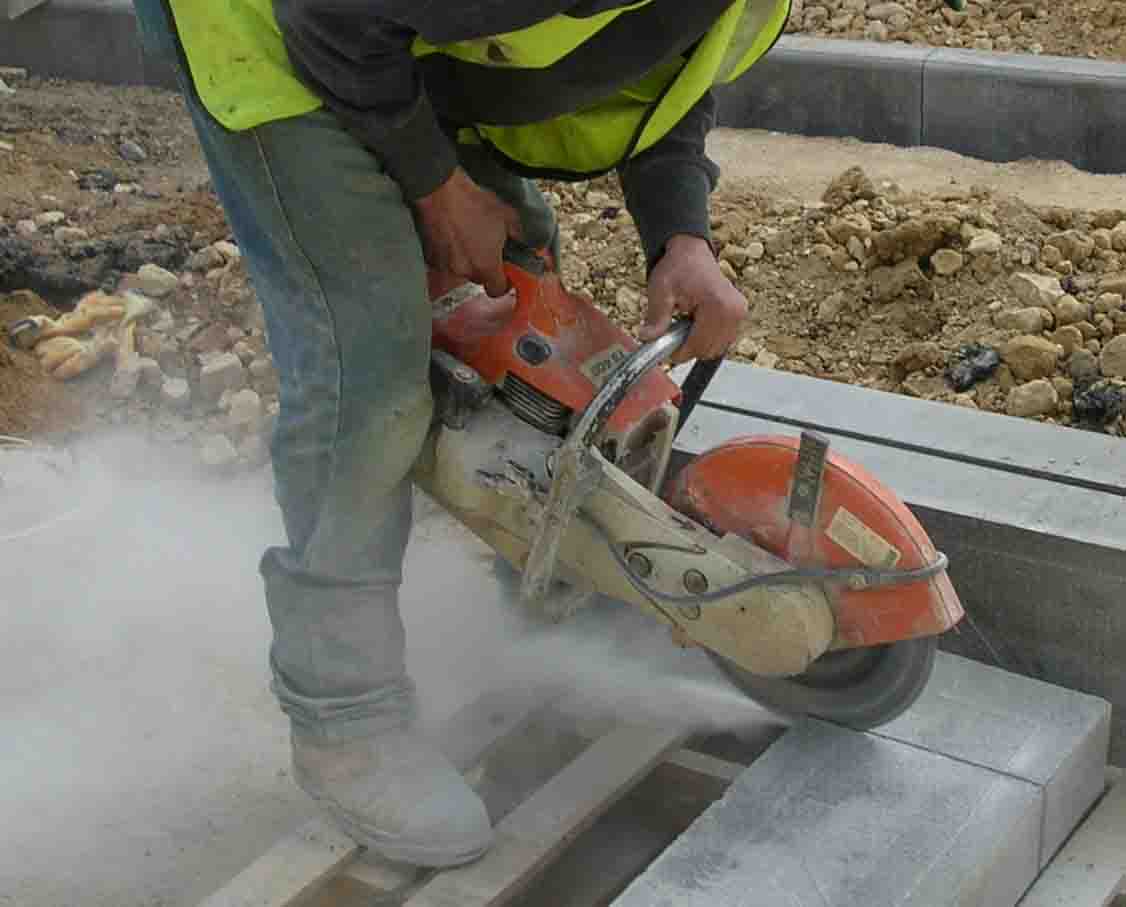It’s estimated that around 500 people who have worked in the UK construction industry die every year from the effects of silica. It’s also estimated that 4000 people die each year from chronic obstructive pulmonary disorder (COPD). Again, many cases linked to working in construction.
There are many common construction tasks performed daily that create dust, such as: cutting concrete, stone and tiles; cutting and sanding wood; sanding plasterboard joints; abrasive blasting; and rock drilling. When not controlled effectively, the resulting dust particles permeate the air where they unwittingly become ingested or inhaled.”
There are four main types of construction dust:
- Silica dust: (or respirable crystalline silica) – from silica-containing materials like granite, concrete, mortar and sandstone
- Wood dust: from softwood, hardwood and wood-based products like MDF and plywood
- Fibrous dust: from asbestos and other such materials
- Lower-toxicity dusts: from materials containing very little or no silica, such as gypsum (e.g. in plasterboard), limestone, marble and dolomite
When working in an environment where any one of these types of dust are prevalent, particles of dust mix with the air and enter the airways, whilst the body has its own tools for combating foreign particles – such as mucus, cilia in the trachea and bronchial tubes leading to the lungs and the immune system itself – some particles manage to evade capture and continue their journey to the lungs. Particles that have made it to the lungs without the body’s natural defenses expelling them, can settle in the lung tissues and with continual exposure, build up over time.
So what are the health risks caused by dust?
A range of respiratory diseases can be caused by exposure to dust, some of which develop quickly such as silicosis, but most build-up over a number of years which is why they can be so dangerous – by the time symptoms appear, the damage is often done.
Five categories of respiratory diseases that affect construction workers:
- Respiratory cancers – for example, lung cancer and mesothelioma (a cancer of the lining of the lungs caused by asbestos)
- Chronic Obstructive Pulmonary Disease (COPD) – chronic bronchitis and emphysema are common types of COPD
- Pneumoconiosis – silicosis and asbestosis are common types of Pneumoconiosis, an irreversible disease where scarring and inflammation occurs on the lung tissue
- Non-cancerous respiratory diseases – diffuse pleural thickening and pleural plaques are two such non-malignant diseases which are caused by asbestos
- Occupational asthma
Latest HSE information shows that there are an estimated 10,000 new cases of respiratory problems caused, or made worse, by work each year. However, there are a number of guidelines surrounding dust control on construction sites.
The Control of Substances Hazardous to Health (COSHH) regulations have set out Workplace Exposure Limits (WEL) for British construction workers. As an example, COSHH recommends that workers should not be exposed to more than 0.1mg.m-3 of silica dust in an eight-hour period.
It’s crucial that dust is effectively managed on construction sites to avoid over-exposure and avoid the chronic health effects caused by long-term exposure.
Although the production of dust is inevitable on construction sites, it can still be controlled. The right dust control systems in place, dust can be efficiently managed and contained, removing the risk of over-exposure for workers.
The two most common ways to control dust are:
- Water dampening and vacuum extraction. Using water to control dust is effective, but sufficient water needs to be available for the entire time the job is in progress – not just at the beginning – to keep surfaces wet, preventing dust from becoming airborne
- Using a vacuum extraction method is the more efficient option. Specialist equipment – such as a filtration and extraction unit – will remove dust as soon as it is produced. In addition, containment tents should also be constructed to surround the work area, further minimising risk
Construction dust is not something to be taken lightly – it can seriously damage health. All site personnel should be aware of the risks and take relevant control measures to reduce the likelihood of their exposure to dust.
For more information call 01525 309807 or email enquiries@ccconsulting.uk.com











